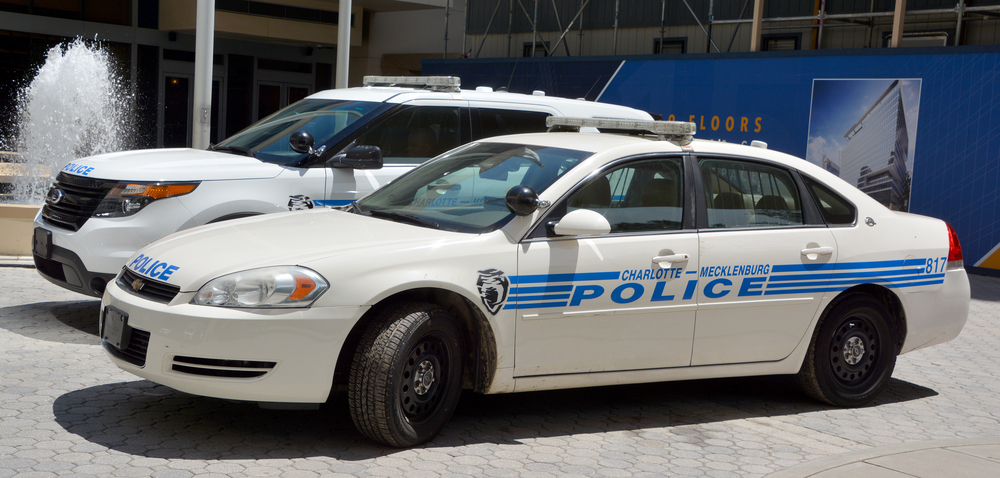Just three months after raise the age took effect on Dec. 1 in North Carolina, early numbers seem to reflect a gentle transition from prosecuting 16- and 17-year-olds in the adult system to prosecuting them in the juvenile system.
Before the General Assembly officially passed that bill in the summer of 2017, one major concern among lawmakers was whether increasing the age of juvenile jurisdiction would overwhelm the youth system.

North Carolina Department of Public Safety
William Lassiter
But the enactment of raise the age (RTA) has come and gone — and while Deputy Secretary for Juvenile Justice William Lassiter said it’s still early, the juvenile system hasn’t been flooded with 16- and 17-year-old offenders.
So how do the actual figures compare?
Raise the age so far
In December 2019, the state received only 24% of the number of delinquent complaints it expected, according to Lassiter.
But overall, about 11% more 16- and 17-year-olds were detained in the first month of RTA than the state projected — 65 detained compared to 58 expected.
Usually petty or minor crimes don’t result in a detention. A higher number of youth detained than complaints shows the state just received more serious crimes than it expected in the first month.
“These are minor differences,” Lassiter said in an email. “But with juvenile detention, we have such small facilities (to keep kids close to their community resources and families) that small differences can matter.”
Projections were created based on data from fiscal year 2015-16 with 15-year-olds as the sample group since they were closest in age to those who would be affected by raise the age.
But why do these numbers matter?
The juvenile system already has certain features that make it more demanding of funds and people than the adult system. School-justice partnerships, juvenile court counselors, psychological counseling and education are unique services of the juvenile system.
And each of North Carolina’s 100 counties does not have a youth development center or detention center. Juvenile justice operates four youth development centers, with a fifth under construction. The state also operates 11 total juvenile detention centers, which include four that are county-operated.
Even counties that do have facilities considered increasing their beds for raise the age.
So if calculations of how many youths will enter the system are off, the differences can be expensive.
In North Carolina, it costs roughly up to $440 a day to confine a juvenile and up to about $40,000 for just three months, according to a 2014 report by the Justice Policy Institute.
Raise the age legislation in North Carolina came with tremendous support by juvenile justice advocates, policy researchers and many legislators. When it became law, hope for decreased recidivism and economic returns increased with it.
If adjustments need to be made to maintain support, that could affect future budget proposals and the cooperation of individual counties and cities that will carry out the daily work.
“In turn, the Juvenile Jurisdiction Advisory Committee [JJAC] will analyze the data in a couple of months to aid them in making appropriate legislative, administrative and funding recommendations to the General Assembly,” Lassiter said in an email.
Raise the age locally
At the local level, sheriff’s departments throughout the state have adjusted to raise the age.
“The plan is to start small and stay with the existing infrastructure that we currently have in place for 16- and 17-year-olds,” said Deputy Sheriff Rodney Collins of Mecklenburg County, which includes Charlotte, in an email. “We are considering as we settle into Raise the Age of housing 15-year-olds but don’t want to go under the age of 15 since our infrastructure is geared for high school-aged kids.”
Mecklenburg Sheriff Garry McFadden agreed to partner with the state’s Department of Public Safety Juvenile Justice to house juveniles in Detention Center North in Charlotte, which officially became a juveniles-only facility in January.
Restorative justice, which plays a large part in raise the age’s prescription of school-justice partnerships and increased juvenile court counselors, is also already at play in Mecklenburg County.
That county, for example, has the only high school housed in a detention center, so 16- and 17-year-olds can stay on grade level, according to Collins.
The state also plans to add additional county and state detention facilities across North Carolina. Durham is already expected to increase its capacity in 2021, and Wake County, which includes Raleigh, is also being considered for expanded capacity.
Besides adding infrastructure for raise the age, the state also partnered with the University of North Carolina School of Government to host training workshops for law enforcement, court counselors, lawyers and school staff in October led by law professor Jacquelyn Greene.
Alicia Stemper from the Orange County Sheriff’s Department said all deputies received training on raise the age, with specific attention to mentorship.
Raise the age funding priorities also include community court diversion programs, like teen court, which allows first-time offenders to be tried by their peers for less serious crimes.
Funding priorities include making teen court services available in every county to keep kids out of the juvenile system in the first place, thereby cutting down intake rates at juvenile facilities.
A new challenge
Another key facet of implementing raise the age is transportation.
Because not every county has a juvenile detention or youth center, getting youth to the closest facility requires not only increased space in existing centers, but also money and manpower to facilitate transport routes.
In eastern and coastal parts of the state, there may not be an established facility across several counties.
“Our goal is to have a facility within an hour of any part of the state, but we are still working on that in the far western and eastern parts of the state,” Lassiter said in an email.
Court services have 18 transportation teams distributed to districts across the state that bring juveniles to and from court. To handle medical visits, mental health visits, and other appointments, 11 teams are now stationed at each state detention and YDC facility, according to the JJAC’s interim report. While transportation teams base themselves in individual districts, they overlap to serve multiple counties.
Law enforcement officers have up to 12 hours to move a juvenile from temporary custody to a juvenile facility or a trained juvenile justice officer.
Juveniles will be transported to the nearest facility, according to Lassiter.
“[Transfers] should never be more than a couple hours away and in most cases far less than that,” Lassiter said via email. Keeping youth near their communities and families is also a priority that Collins said factored into opening Detention Center North.
According to House Bill 1001, which funded raise the age, nearly $600,000 in recurring funds for fiscal year 2019-20 alone will go toward creating transport teams and buying vans.

Pingback: North Carolina’s Raise the Age Law Highlights How Schools Handle Discipline - Youth Today
I applaud North Carolina for investing in their youth and their future. Looking forward to seeing what a difference it makes.